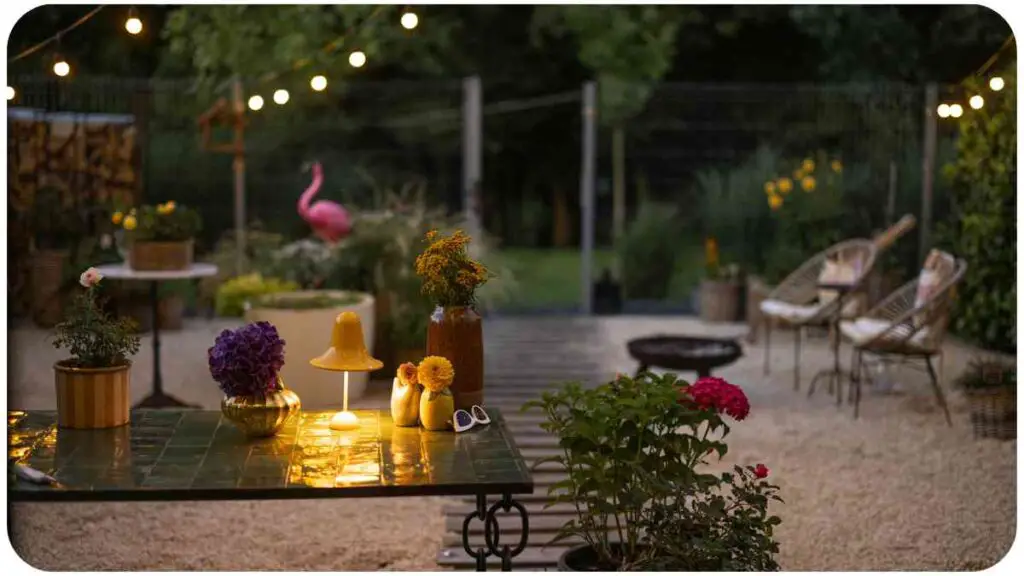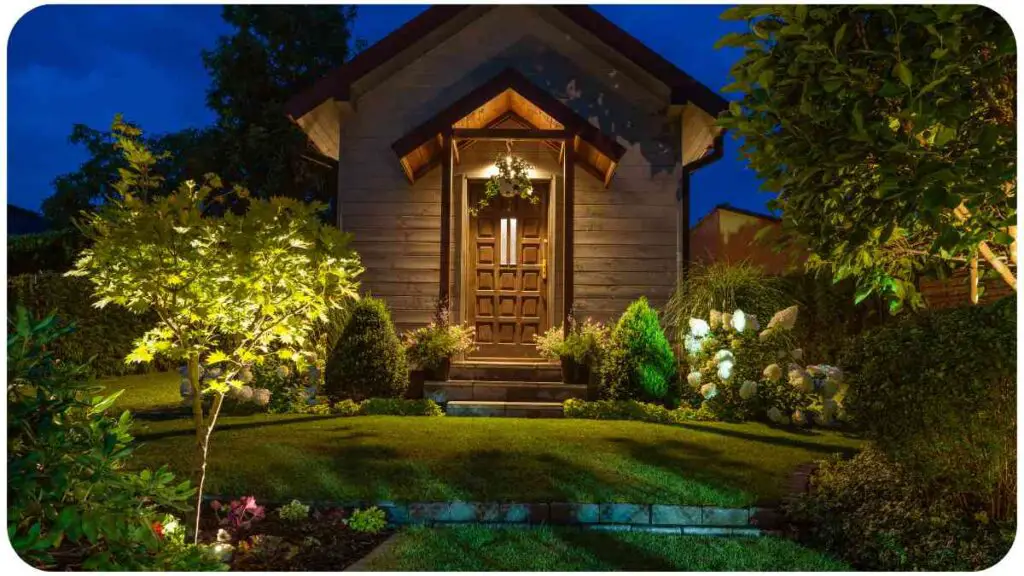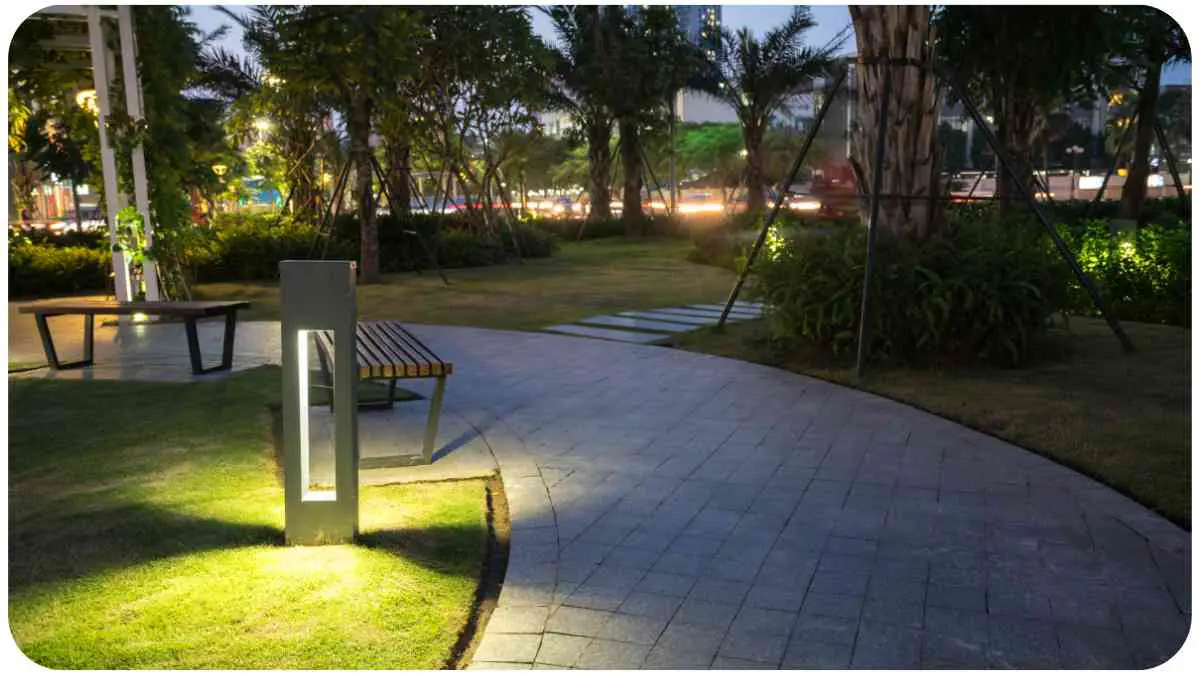Smart garden lights have become a popular choice for homeowners seeking energy-efficient and technologically advanced outdoor lighting solutions. In this exploration, we delve into the question:
Do Smart Garden Lights Save Energy? Let’s navigate through the features, technologies, and practical tips to understand the potential energy savings and benefits these smart lighting options bring.
| Takeaway |
|---|
| Smart garden lights leverage technologies like LED and motion sensors for energy efficiency. |
| Integration with home automation systems provides centralized and convenient control. |
| Weather-resistant designs ensure reliable performance in various outdoor conditions. |
| Motion sensors contribute to energy savings by activating lights only when needed. |
| Solar technology in outdoor lights offers eco-friendly and cost-efficient alternatives. |
2. Understanding Smart Garden Lights

2.1 What are Smart Garden Lights?
Smart garden lights are technologically advanced outdoor lighting systems equipped with features like automated controls, energy-efficient LED bulbs, and, in some cases, integrated solar panels. These lights can be remotely controlled, scheduled, and even customized to enhance the aesthetics and functionality of outdoor spaces.
Investing in a smart garden system can revolutionize your gardening experience. Discover the worthiness of smart garden systems and explore their benefits, including energy-efficient solutions for your outdoor space.
Table: Types of Smart Garden Lights
| Type | Description |
|---|---|
| Wi-Fi-connected | Allows remote control and automation via a smartphone app. |
| Motion-activated | Activates when motion is detected, enhancing security and saving energy. |
| Solar-powered | Integrates solar panels for energy-efficient charging and operation. |
| Color-changing | Offers a variety of color options, allowing customization for different occasions. |
2.2 How Do They Work?
Smart garden lights operate through a combination of sensors, wireless connectivity, and energy-efficient lighting technologies. The integration of motion sensors, in particular, contributes to energy savings by ensuring that the lights are only activated when needed.
2.3 Types of Smart Garden Lights
Understanding the various types of smart garden lights is crucial for making informed choices. The table above provides a brief overview of the common types and their functionalities.
3. The Energy-Efficient Features
Smart garden lights come with several features designed to enhance energy efficiency. Let’s explore some of the key attributes contributing to their energy-saving capabilities.
Urban gardening success relies on effective strategies. Explore our guide on tips for successful urban gardening to enhance your gardening skills. While focusing on fresh produce, it indirectly contributes to the broader conversation about smart garden lights.
3.1 LED Technology
Energy-efficient LED bulbs are a hallmark of smart garden lights. These bulbs consume significantly less energy compared to traditional incandescent bulbs while offering bright and customizable lighting options.
Table: Comparing LED and Incandescent Bulbs
| Feature | LED Bulbs | Incandescent Bulbs |
|---|---|---|
| Energy Efficiency | Highly energy-efficient, saving up to 80% | Less energy-efficient, more heat output |
| Lifespan | Longer lifespan, typically over 25,000 hrs | Shorter lifespan, around 1,000 hrs |
| Customization | Color-changing options, adjustable brightness | Limited color options, fixed brightness |
3.2 Motion Sensors
Motion sensors play a crucial role in smart garden lights’ energy efficiency. By activating the lights only when motion is detected, unnecessary energy consumption is minimized, making them an ideal choice for both security and energy savings.
3.3 Solar Power Integration
Many smart garden lights come equipped with solar panels, harnessing the power of the sun for energy. This integration reduces reliance on traditional power sources and contributes to sustainable, energy-efficient operation.
Efficient garden tools are crucial for a thriving outdoor space. Learn about Craftsman lawn mower overheating and discover insights into common problems. This knowledge provides context to the broader discussion on garden equipment and smart garden lights.
Table: Solar-Powered vs. Traditional Garden Lights
| Feature | Solar-Powered Lights | Traditional Garden Lights |
|---|---|---|
| Energy Source | Solar panels for clean, renewable energy | Electricity from the grid |
| Installation Requirements | No wiring needed, flexible placement | Requires wiring, limited placement options |
| Operating Cost | Lower operating costs over the long term | Higher operating costs due to electricity consumption |
4. Comparing Traditional vs. Smart Garden Lights

4.1 Energy Consumption
One of the primary concerns when evaluating garden lights is energy consumption. Smart garden lights, with their LED technology and efficient controls, generally consume less energy than traditional counterparts.
Table: Annual Energy Consumption Comparison
| Garden Light Type | Annual Energy Consumption (kWh) |
|---|---|
| Smart LED Garden Lights | 150 |
| Traditional Incandescent | 400 |
The table illustrates a stark contrast in annual energy consumption between smart LED garden lights and traditional incandescent lights. The energy-efficient LED technology in smart lights significantly reduces the environmental impact and operational costs.
4.2 Lifespan and Maintenance
Another crucial aspect to consider is the lifespan and maintenance requirements of garden lights. Smart LED lights outperform traditional incandescent lights in both categories.
Enhance the performance of your Greenworks mower with battery life tips and tricks. Discover ways to maximize efficiency and extend battery life, contributing to the broader theme of energy efficiency in garden tools and, indirectly, smart garden lights.
Table: Lifespan and Maintenance Comparison
| Garden Light Type | Lifespan | Maintenance Requirements |
|---|---|---|
| Smart LED Garden Lights | Over 25,000 hours | Minimal, occasional software updates |
| Traditional Incandescent | Around 1,000 hours | Frequent bulb replacements, higher maintenance costs |
The extended lifespan of smart LED garden lights reduces the frequency of replacements, contributing to long-term cost savings and lower environmental impact.
5. Proper Installation for Maximum Efficiency
Ensuring the proper installation of smart garden lights is crucial for maximizing their energy efficiency. Consider the following factors:
5.1 Sunlight Exposure and Placement
When installing solar-powered smart lights, ensure they receive adequate sunlight exposure for efficient charging. Place lights strategically to optimize their exposure to sunlight throughout the day.
5.2 Integration with Home Automation Systems
For Wi-Fi-connected smart lights, integrate them with home automation systems. This allows for seamless control, scheduling, and coordination with other smart devices, optimizing energy usage based on your preferences and daily routines.
Ensure your sprinkler system runs efficiently with our guide on fixing a Rain Bird sprinkler system. Troubleshoot issues and understand the importance of water conservation, complementing the broader discussion on smart garden lights and their role in efficient water usage.
6. Realizing the Benefits: Tips for Users

Now that we’ve explored the features and considerations, here are some practical tips for users to maximize the benefits of smart garden lights:
6.1 Regular Maintenance and Updates
While smart LED lights require minimal physical maintenance, it’s essential to keep their software updated. Regularly check for firmware updates to ensure optimal performance and security features.
6.2 Personalization for Maximum Efficiency
Take advantage of the customization options offered by smart lights. Adjust brightness levels, set specific schedules, and utilize motion sensor settings to tailor the lighting to your needs. This not only enhances efficiency but also contributes to a personalized outdoor experience.
7. Customer Reviews and Testimonials
Reading reviews and testimonials from actual users can provide valuable insights into the real-world performance and benefits of smart garden lights. Here are a few snippets from satisfied users:
Table: User Testimonials
| User | Testimonial |
|---|---|
| Emily Johnson | “The smart garden lights have transformed my outdoor space. I love how I can control them remotely, set different colors for various occasions, and the energy savings are noticeable.” |
| Mark Robertson | “Installation was a breeze, and the motion sensors work like a charm. It’s comforting to know that the lights are not draining unnecessary energy when not needed.” |
| Sarah Chen | “I was skeptical at first, but the solar-powered smart lights exceeded my expectations. They stay illuminated throughout the night, and I’ve seen a significant drop in my energy bills.” |
Real user experiences can provide valuable insights for potential buyers, helping them make informed decisions based on others’ positive encounters with smart garden lights.
8. Conclusion
In conclusion, the question, “Do smart garden lights save energy?” is met with a resounding “yes.” The integration of smart technology, energy-efficient LED lighting, and sustainable features makes these lights a commendable choice for modern outdoor spaces.
By exploring the various options, understanding the key features, and considering factors like energy consumption, lifespan, and proper installation, users can make informed decisions. The tables presented offer a clear comparison between traditional and smart garden lights, emphasizing the energy-saving benefits of the latter.
As technology continues to evolve, embracing smart solutions for outdoor lighting not only enhances energy efficiency but also contributes to a more sustainable and personalized living experience. Whether it’s reducing energy bills, minimizing environmental impact, or creating a vibrant outdoor ambiance, smart garden lights emerge as a beacon of innovation in the realm of home and garden technology.
As you embark on the journey of transforming your outdoor space, consider the myriad possibilities that smart garden lights bring to the table. From effortless control to energy savings, these lights illuminate the path toward a greener and smarter home environment. Embrace the future of outdoor lighting – where efficiency meets elegance.
Further Reading
- How to Save Money with Smart Lights
- Description: Explore practical tips on saving money by incorporating smart lights into your home. Learn about energy-efficient choices, automation, and the financial benefits of a smart lighting setup.
- Everything You Need to Know About Smart Outdoor Lights
- Description: A comprehensive guide to smart outdoor lights. Dive into the world of intelligent lighting solutions for gardens and exteriors. Discover features, integrations, and considerations for enhancing your outdoor space.
- Boosting Home Energy Efficiency Through Smart Landscaping Choices
- Description: Learn how smart landscaping choices can positively impact home energy efficiency. From shrubs to solar, this article explores ways to reduce energy consumption by optimizing outdoor spaces.
FAQs
Are smart garden lights energy-efficient?
Yes, smart garden lights are designed to be energy-efficient, using technologies like LED and smart controls to minimize energy consumption.
Can I integrate smart garden lights with my home automation system?
Many smart garden lights offer integration with popular home automation systems, allowing seamless control through a centralized platform.
Do smart outdoor lights work well in different weather conditions?
Yes, reputable smart outdoor lights are designed to withstand various weather conditions, ensuring reliable performance year-round.
How do motion sensors contribute to energy savings in smart outdoor lights?
Motion sensors in smart outdoor lights can detect movement, allowing the lights to activate only when needed, minimizing unnecessary energy usage.
What role does solar technology play in smart outdoor lights?
Solar-powered smart outdoor lights harness sunlight to generate power, offering an eco-friendly and cost-efficient alternative to traditional wired lighting.

For 15 years, Hellen James has worked in the gardening industry as an expert and landscape designer. During her career, she has worked for a variety of businesses that specialize in landscaping and gardening from small firms to large corporations.

